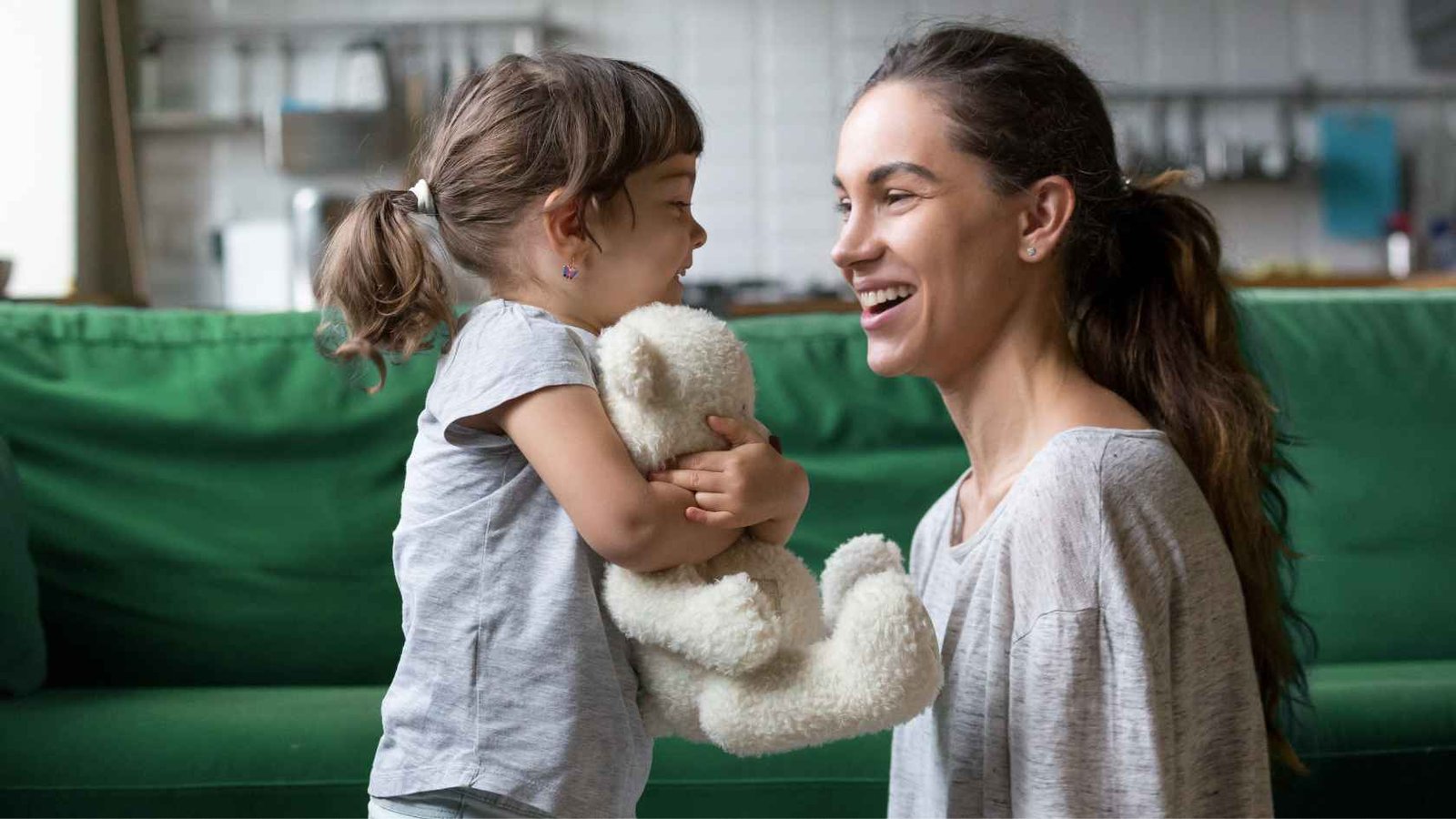Are you finding it difficult to understand what your toddler is trying to say?
Do you sometimes worry that your busy schedule is making it harder to connect?
For many working parents, a big challenge is communicating with their toddlers.
Communication is key to a strong bond. It helps us understand their first words and interpret their nonverbal cues.
The good news is that toddlers communicate in many different ways—beyond just words.
By understanding how do toddlers communicate and know how to respond, you can deepen your bond with your little one, even on your busiest days.
Understanding Toddler Communication
Toddlers communicate in many ways beyond words.
They may not always have the vocabulary to express what they want. They often use nonverbal cues, gestures, and sounds to convey their needs and feelings.
Nonverbal Communication
Toddlers use facial expressions, body language, and gestures to communicate.
Watch for them pointing, reaching, or showing objects. It’s how they express interest or make requests.
Simple Words and Phrases
At this stage, toddlers are beginning to use words or short phrases like “more,” “up,” or “no.”
They may also mimic words or sounds that they hear from you.
Emotional Expressions

Toddlers often express emotions through crying, laughter, or excitement.
They may not yet be able to say “I’m feeling upset.”
But they will let you know how they feel through their reactions.
How to Encourage Your Toddler to Learn New Words
As a parent, you play a crucial role in helping your toddler develop their language skills.
Here are a few simple strategies to encourage communication:
1. Talk Often
Narrate daily activities and talk to your toddler about what you’re doing. Whether you’re making breakfast or getting them dressed.
Use simple, clear language, and repeat words to reinforce learning.
2. Ask Questions
Even if your toddler can’t answer in full sentences, ask questions like “Do you want the blue cup or the red cup?”
It encourages them to think and respond.
3. Use Gestures
Pairing words with gestures helps toddlers make connections between actions and language.
For example, when you say “wave goodbye,” wave your hand to show them what it means.
Related Reading: How to Teach Empathy to Toddlers with Simple, Everyday Activities
Tips to Communicate with Your Toddler and Strengthen Bond
1. Listen Actively and Show You Care

One of the best ways to strengthen your bond with your toddler is by being an active listener.
Toddlers need to feel heard and understood, even if their words are limited.
Get on Their Level
Physically kneel or sit down at their eye level when talking to your toddler. This makes them feel like you are fully present and paying attention.
Acknowledge Their Feelings
If your toddler is upset or frustrated, acknowledge their emotions.
You might say, ‘I can see you’re feeling sad’ or ‘It’s fine to feel frustrated.’
This helps them learn to identify their own feelings while feeling validated.
Repeat and Expand
If your toddler says a word, repeat it and add a little more to it.
For example, if they say “ball,” you could say, “Yes, that’s a red ball.” This helps expand their vocabulary.
2. Turn Everyday Moments into Conversations
Interactive communication goes beyond just talking.
It involves engaging your toddler in a two-way conversation. Even if their words are still developing.
Follow Their Lead
If your toddler is showing interest in a toy or object, talk about it.
For instance, if they’re playing with a stuffed animal, ask questions like, “What is your teddy bear doing?”
Here’s what you can do:
Play-Based Learning
Playing games like “peek-a-boo” or “hide and seek” is good. They engage your toddler and teach them to take turns in communication.
Related Reading: 10 Fun and Easy Games to Play with Toddlers at Home—Build a Strong Bond with Them
Sing Songs Together
Singing familiar songs, like “Twinkle Twinkle Little Star,” helps toddlers. It teaches them new words and rhythms.
You can also make up simple songs together about your daily routines.
3. Help Toddlers Express Their Emotions

Toddlers are just beginning to understand and express their emotions. So it’s important to help them navigate their feelings.
Here’s what you can do:
Name Their Emotions
When your toddler feels something strongly, help them by naming the emotion.
For example, “You’re happy!” or “You seem mad.”
This helps them learn emotional vocabulary.
Offer Comfort and Understanding
If your toddler is upset, reassure them with comforting words and a gentle touch.
Let them know it’s okay to have big feelings.
Related Reading: Raising Emotionally Strong Kids—Tips for Working Parents
Encourage Problem-Solving
When faced with a challenge, guide your toddler toward solutions.
For example, if they’re frustrated because they can’t reach something, you can ask, “What can we do to solve this?”
By encouraging them to think through their feelings, you’re teaching them valuable emotional skills.
Enjoy the Process of Learning How Toddlers Communicate
Navigating communication with your toddler can sometimes feel like solving a puzzle. But it’s a rewarding journey that strengthens your bond every step of the way.
As you learn how your toddler communicates—through words, gestures, or emotions—you’ll not only understand them better. You are also making them feel seen and valued.
It’s important to remember that every toddler is unique in their communication style.
Be patient with the process and celebrate the small breakthroughs. And most importantly, enjoy these moments of connection.
Do you have any favorite strategies or experiences with your toddler’s communication? We’d love to hear about them! Share your thoughts in the comments
If you’re looking for more parenting insights, be sure to check out other articles on workingmomandbaby.com.

